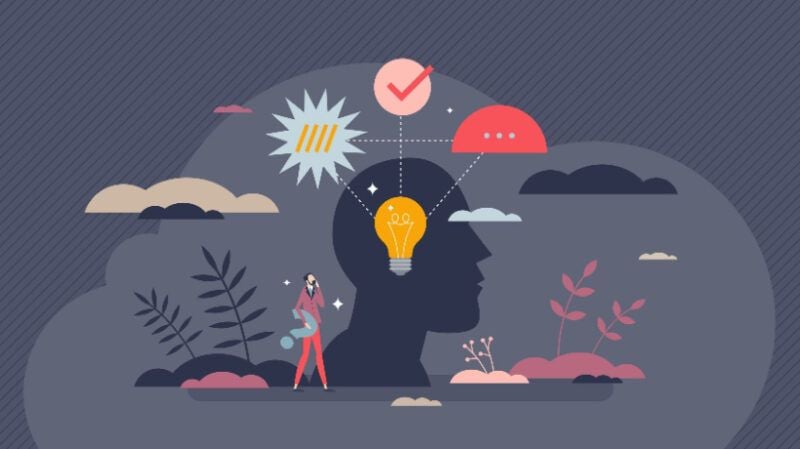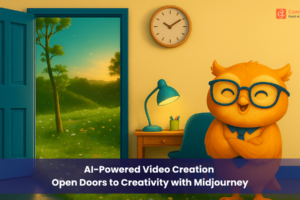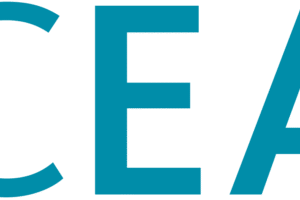
Behavioral Economics Principles: A Guide For Educators

Harnessing The Potential Of Every Learner
Can we influence engagement and encourage effort in learners? Grappling with this question, educators and Instructional Designers have begun looking for an answer in fields outside of education. A new paradigm in cross-disciplinary research has brought behavioral economics into the frame. Combining principles from multiple domains, the field of behavioral economics in education seeks to identify how learners make decisions and engage with learning content in order to create truly effective experiences that accommodate behavioral tendencies and drive optimal results. The following analysis will provide an overview of this emerging field, discussing key concepts and principles that can inform educational design and delivery. Let’s get started.
An Overview Of Behavioral Economics
The field of behavioral economics redefines existing assumptions around the why and how of human decision making. Initially, behavioral economics began as an intersectional study of economic behavior analysis and human psychology principles. Attempting to predict how individuals approach, identify, and consider their own economic behavior, and how they deviate from purely logical or rational action, this field started getting the attention of experts from other domains. While the current bibliography mostly consists of academic manuscripts and research, the potential of behavioral economics in education provides intriguing possibilities and avenues for further exploration, especially for eLearning professionals.
Since academic success is a pertinent concern in education circles, the application of behavioral economics is ripe to yield actionable solutions. Approaching performance, achievement, motivation, and engagement from a psychological/behavioral standpoint, this discipline provides a roadmap to understanding and harnessing learners’ decision-making processes by leveraging practices that actually work. So, how can we utilize these insights to encourage optimal outcomes?
Behavioral Economics Principles For Engaging Learning
To develop independent learners who leverage learning opportunities effectively, education professionals need to understand how learners approach the learning experience and how they operate within an educational environment. While not exhaustive, the following list of behavioral economics principles can illustrate how to best address learner needs to align with their behavioral inclinations.
1. Prospect Theory And Framing Effects
In behavioral economics, prospect theory illustrates how individuals decide between different alternatives, and in this context, how learners perceive and evaluate risky versus safe options. Is the risk worth it based on the yield of a positive outcome or the avoidance of a negative result? As we will see in another behavioral economics principle, individuals will do more to avoid losses than to receive gains, and this is where framing effects can prove extremely useful.
The way we present information affects individual perception, meaning that learners evaluate a situation and its consequences based on the way it is communicated to them. Even if the benefits of two situations were equally attractive, human behavior and choice would still be influenced by how they perceive the way each was presented. Therefore, the so-called framing effect underlines the significance of intentional approaches in order to influence desired responses from learners, such as increased effort or engagement.
In a few words, if a challenge is presented as a challenge instead of an opportunity, learners will view and approach it as such. This could potentially lead to withdrawal from the learning process or minimal effort because learners are more motivated by the avoidance of loss, rather than the uncertain probability of gain down the line. People want immediate outcomes, not distant rewards far off in the future. Within this context, let’s see two types of framing effects that are potentially useful in a learning environment.
Types Of Framing Effects
- Goal framing focuses on results by endorsing behaviors that will lead to a desired outcome, either through “If you do this, you will gain that,” or “If you don’t do this, you won’t gain that.”
- Attribute framing focuses on the merits/negatives of undertaking any action, depending on whether we wish to encourage or steer learners away. For example, “Students who start early do well on this,” versus “Only a few students who start late do well on this.”
Drawing insights from prospect theory and the framing effect, educators and eLearning professionals can better understand how to present the concept and practice of learning within a classroom of unmotivated learners. By accounting for this behavioral economics principle, educators can lead them toward increasing their effort, simply by molding the narrative to highlight that loss is unwanted or gain is beneficial.
2. Loss Aversion And Status Quo Bias
Loss aversion represents how individuals (in this context, learners) are more motivated to avoid loss than to achieve equivalent gains. The pain of loss is more intense than the pleasure of gaining something of equal value. From an educational perspective, loss aversion can offer valuable insights into learner behavior, be strategically applied to refine Instructional Design practices, and encourage motivation and engagement.
Traditional educational environments have long harnessed gain-based models (students undertake specific actions to get good grades, pass exams, advance to the next class, etc.) as rewards for participation and achievement. And yet, despite the fact that these incentives have their merits, behavioral economics suggests that loss-based framing is actually more useful, as it aligns with learners’ natural aversion to loss.
Now, status quo bias refers to a cognitive tendency where individuals prefer the current state of affairs over change, even if alternatives present clear benefits. This bias often leads people to stick to what they know, such as familiar patterns or default options, because they fear loss, inertia, or uncertainty. In education, this psychological resistance can shape learning behaviors, affecting performance, development, as well as critical and creative thinking.
As such, both principles of loss aversion and status quo bias can be combined to enhance our understanding of how learners tend to react within a learning environment. They can also guide us on how to establish an effective learning ecosystem where learners aren’t afraid to make unconventional choices or overcome loss for the sake of betterment.
3. Anchoring
Individuals often rely heavily on the first piece of information they receive when making decisions. That’s called anchoring, which is a form of cognitive bias and acts as a point of reference. Even when the anchor, that first piece of information, is arbitrary or irrelevant, it still influences judgments and behaviors significantly. When it comes to learning, anchoring plays a powerful role in shaping expectations, performance, and motivation. Anchors also affect how learners approach assessments, set goals, react to pre-established benchmarks, and evaluate themselves in comparison to their peers.
For example, say that a learner begins an online course that states, “This course is usually completed in 10 hours.” The hours cited act as a pre-established benchmark, an anchor, which compels the learner to complete it in this specific timeframe. If the course is supposed to be completed in 10 hours, then the learner simultaneously considers this anchor as the minimum and maximum amount of time that should be invested and reached. Both the course creator who added this estimate and, supposedly, the learner’s peers who completed the module in 10 hours reinforced the reality of this timeframe. If the learner exceeds or doesn’t reach the 10 hours, won’t they consider that they failed to perform as expected?
As such, anchors affect behavior. Learners require autonomy to follow their own learning path in a manner that works for them specifically. Therefore, Instructional Designers should assess any anchors during course creation and consider how they may influence diverse learners. While anchoring can guide learner behavior constructively, it must also be carefully calibrated to avoid discouragement.
4. Paradox Of Choice
Modern learners are often inundated with options and choices, from which courses to pick to what career they should pursue. And yet, it seems like too many choices may be the problem behind poor academic performance. Can it be? In behavioral economics, the paradox of choice principle suggests that some degree of choice is beneficial, but too many options actually overwhelm learners, leading to decision fatigue and paralysis. An overabundance of choices can discourage learners from making one immediately, opting to “decide later,” which often translates to not deciding at all. Even if they make a decision, the knowledge that there were other options can leave them unsatisfied with what they did end up choosing.
Moreover, as choice overload increases cognitive overload, learners expend energy comparing options instead of investing their bandwidth for actual learning. As such, despite being a controversial principle, Instructional Designers and educators must remain aware of this paradox and manage how options are presented. Personalizing recommendations to individual students or setting a manageable range of default options may help both educators and learners participate in and benefit from a much more streamlined learning environment.
Of course, having choices is a fundamental human right and supports the development of autonomous individuals. Therefore, it’s important to remain critical of how we approach this behavioral economics principle, if we choose (see?) to apply it to our work. Our focus should lie in simplifying learners’ decision-making process, not taking away valuable options and giving them a uniform, unvaried experience.
5. Intrinsic Motivation
The concept of motivation is not new in education circles. Instructors are constantly refining their techniques to ensure that learners pay due attention and invest enough effort to reach their learning objectives. However, in behavioral economics, the concept of intrinsic motivation is not just a prerequisite to fulfilling a goal but a powerful driver of effective and lasting learning. It means engaging in a task for the inherent satisfaction or interest it provides, rather than due to external pressures or rewards of advancement and prestige (extrinsic motivators).
While certainly not a fixed trait, intrinsic motivation can be shaped by context, expectations, and subtle psychological nudges. Therefore, we can focus on three core aspects to account for during the Instructional Design process to ensure that our learners are intrinsically motivated:
Students need to understand that they are in control of their learning, so it’s important to allow choices. To avoid the paradox of choice, try a more structured approach through a manageable range of meaningful options tailored to support each learner’s goals.
To achieve a goal, one must first have a purpose. Behavioral economics highlights the power of framing, where learning should align with a learner’s broader goals, as well as bring real-life value and relevance.
Learners are motivated when they see progress as something measurable or tangible, and even more so when they feel competent. Providing indicators that illustrate their journey to mastery reinforces effort and helps students recognize their own improvement.
While not a cure-all for low motivation, these core markers can help guide educators and eLearning professionals in creating enriching curricula that make learners want to learn more.
Conclusion
The ability to recognize and positively influence how learners perceive and experience the learning process can create better educational opportunities. Don’t think that the principles of behavioral economics are too specialized to bring true value to your learner audience. Understanding decision-making behaviors is crucial to establishing useful learning systems and experiences that stick, and it’s our goal as educators to help learners enjoy and invest in learning. Still, some students may require a different approach to perform optimally. It’s a good thing that there are many alternative models you can use and an extensive list of experts you can consult for additional insight.
Source link



